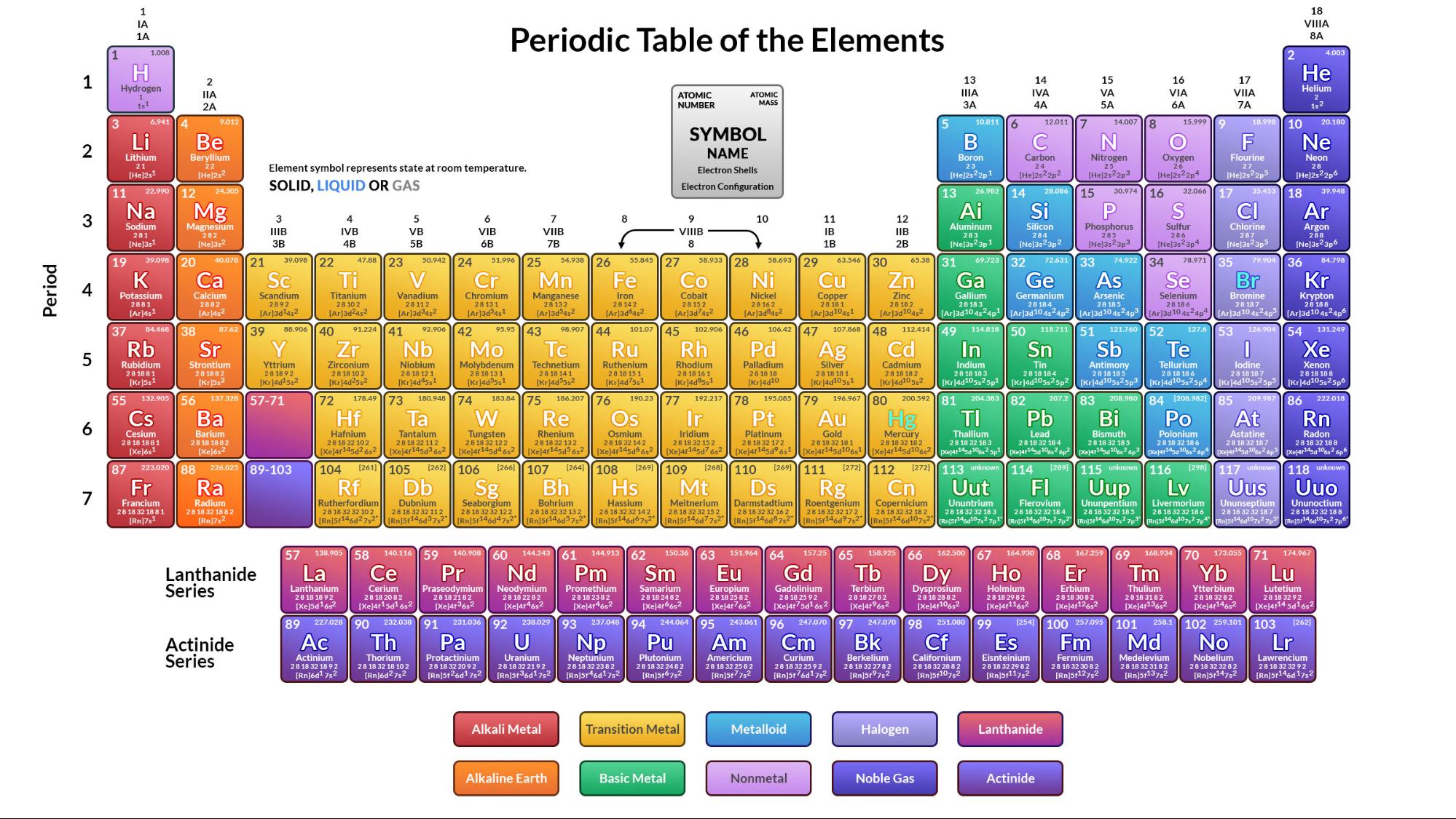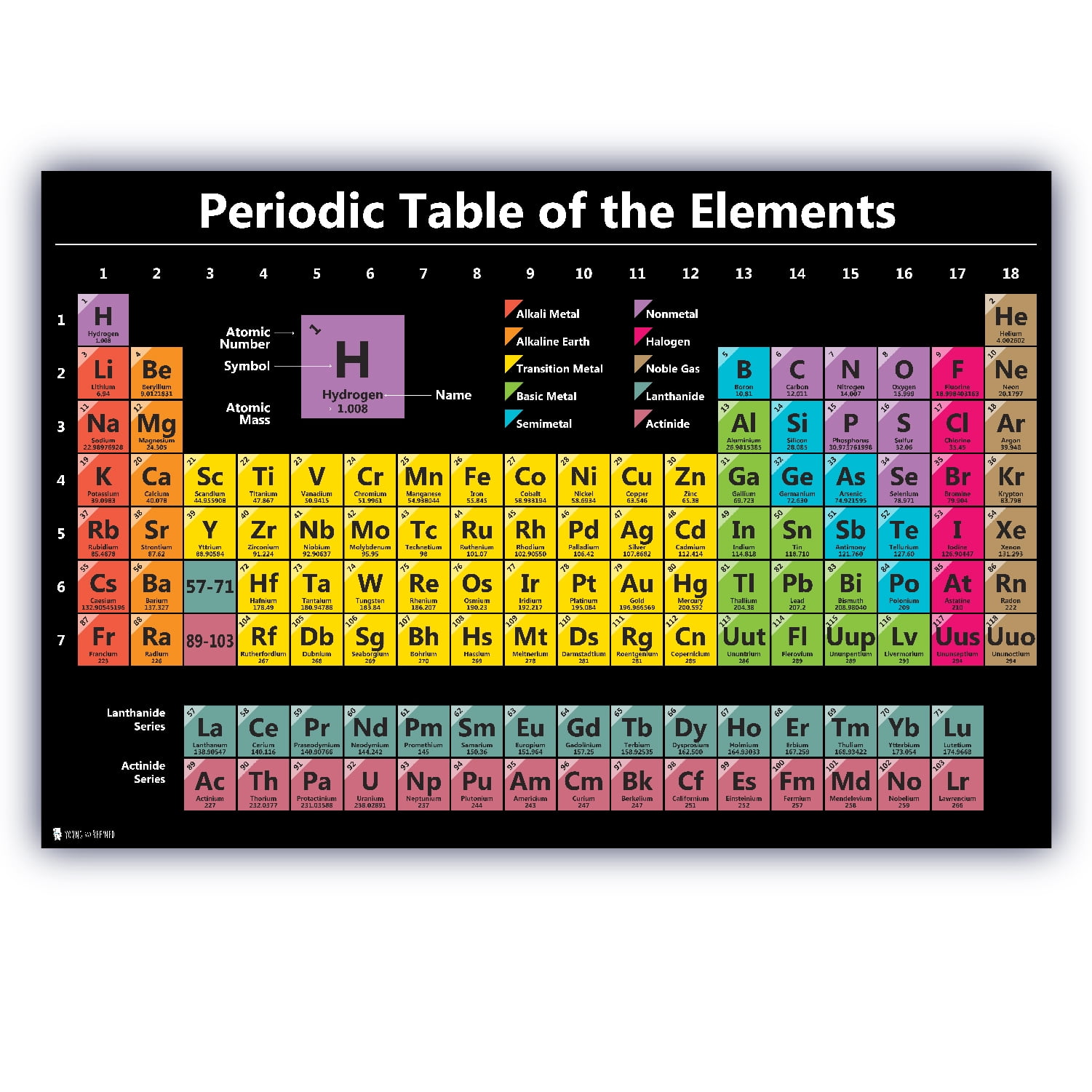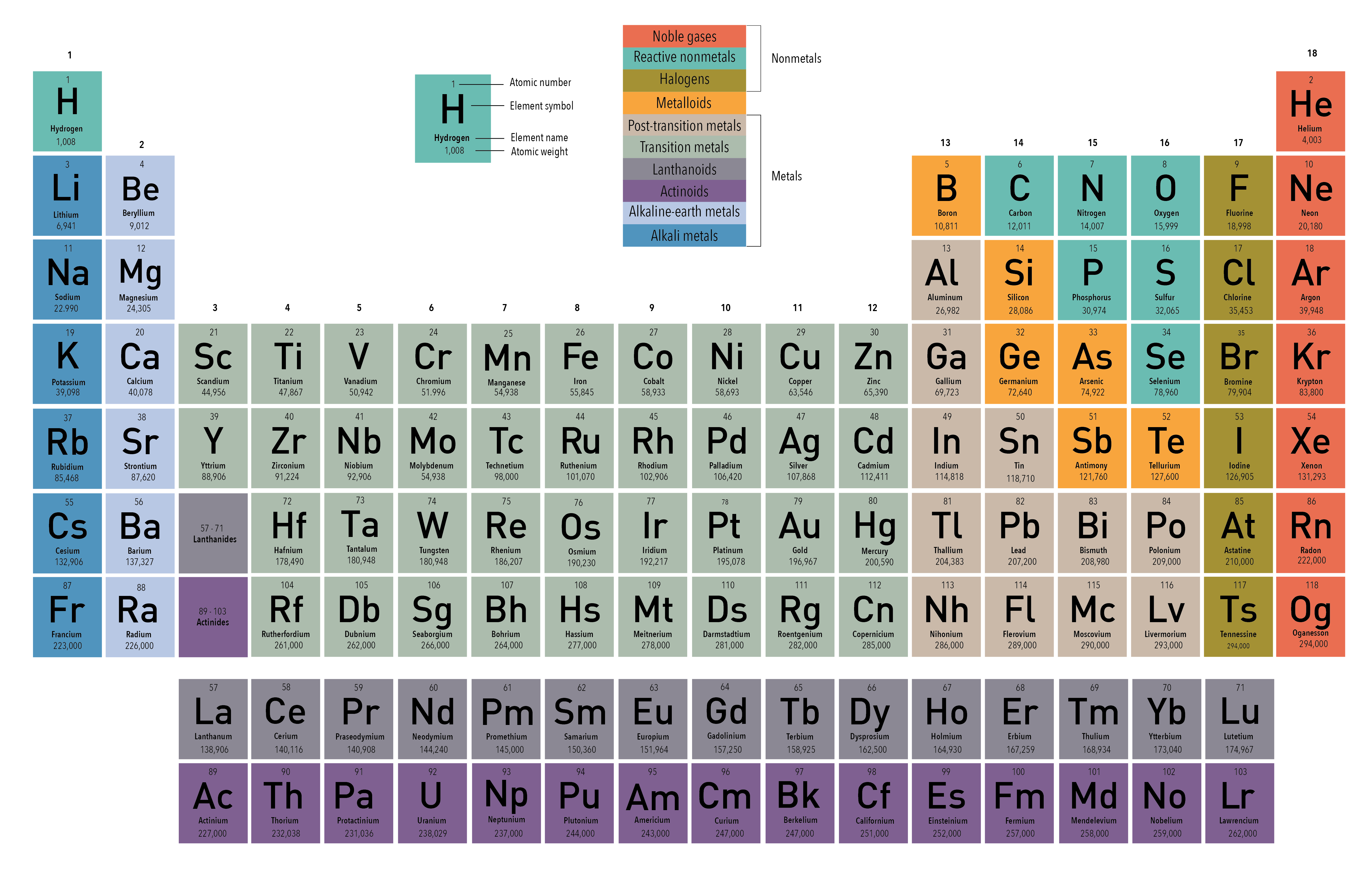

Back in 2001, nuclear energy made up one-third (33%) of the EU’s electricity generation, and in the following 20 years fell down to 25%. Nuclear energy is the largest single source of electricity generation in the EU and across Europe despite its decline over the past couple of decades. While hydropower doesn’t make up as big of a share as other sources, it’s the most common primary source of electricity generation in Europe, playing an important role in providing renewable energy. While this might still seem small, the EU’s share of wind and solar electricity generation is tied for first alongside Oceania when compared to other regions around the world.
#PERIODIC TABLE OF ELEMENTS DRIVERS#
The expansion of wind and solar generation have been the primary drivers in this shift towards renewables, going from only generating 8% of the EU’s electricity in 2011 all the way to 19% in 2021.

A decade later, renewable energy sources are coming close to equaling fossil fuels, with renewables making up 32% of the EU’s electricity generation compared to fossil fuels’ 36% in 2021. In 2011, fossil fuels (oil, natural gas, and coal) made up 49% of the EU’s electricity production while renewable energy sources only made up 18%. Europe’s Electricity Generation by Energy SourceĮurope has been steadily transitioning towards renewable sources of energy for their electricity generation, making considerable progress over the last decade. This graphic maps out European countries by their top source of electricity generation using data from Electricity Maps and the IEA, along with a breakdown of the EU’s overall electricity generation by source in 2021. While many countries have been making progress in their energy transition away from fossil fuels, nearly half of European countries are still dependent on them as their primary source of electricity generation.
#PERIODIC TABLE OF ELEMENTS FREE#
Sign up to the free mailing list to get beautiful visualizations on natural resource megatrends in your email every week.Įnergy and electricity supply have become vital for nearly every European nation over the past year, as the region shifts away from its dependence on Russian fuel imports. Mapped: Europe’s Biggest Sources of Electricity by Country

The color-coding shows whether there’s enough of each element, or whether the element is becoming scarce, based on current consumption levels. On the graphic, the area of each element relates to its number of atoms on a logarithmic scale. This visualization made by the European Chemical Society ( EuChemS), shows a periodic table of these 90 different elements, highlighting which ones are in abundance and which ones are in serious threat as of 2021. The building blocks for everything on Earth are made from 90 different naturally occurring elements.

The Periodic Table of Endangered Elements


 0 kommentar(er)
0 kommentar(er)
